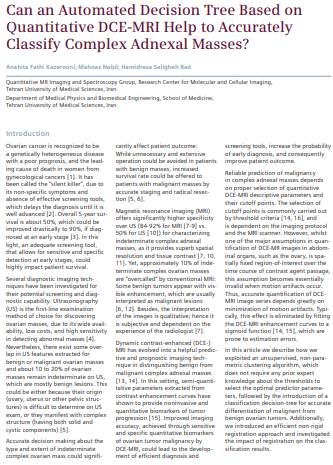Can an Automated Decision Tree Based on Quantitative DCE-MRI Help to Accurately Classify Complex Adnexal Masses
Abstract
Ovarian cancer is recognized to be a genetically heterogeneous disease with a poor prognosis, and the leading cause of eath in women from gynecological cancers. It has been called the “silent killer”, due to its non-specific symptoms and absence of effective screening tools, which delays the diagnosis until it is well advanced. Overall 5-year survival is about 50%, which could be improved drastically to 90%, if diagnosed at an early stage. In this light, an adequate screening tool, that allows for sensitive and specific detection at early stages, could highly impact patient survival. Several diagnostic imaging techniques have been investigated for their potential screening and diagnostic capability. ultrasonography (US) is the first-line examination method of choice for discovering ovarian masses, due to its wide availability, low costs, and high sensitivity in detecting abnormal masses . Nevertheless, there exist some overlap in US features extracted for benign or malignant ovarian masses and about 10 to 20% of ovarian masses remain indeterminate on US, which are mostly benign lesions. This could be either because their origin (ovary, uterus or other pelvic structures) is difficult to determine on US exam, or they manifest with complex structure (having both solid and cystic components).

